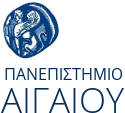The subject of this diplomatic work is the cast coins of the Greek cities of the Northwest coast of Black Sea: Niconion, Istria and especially Olbia because of their uniqueness in the history of monetary during the Archaic and Classical times. The form of the coins, the metal from which it was created and their evolution, they are not found to other regions of the Greek world. This is a fact and still incites scientific discussion today.
The purpose of this study is to present the monetary history of the Northwest coast of Black Sea and the factors that influenced its evolution, as well as to determine its position both to the Greek and world monetary history.
In this master thesis studies of Russian, Ukrainian, Romanian, Bulgarian and Polish scientists have been used as reference, as well as studies of Russian Tsarist researchers with completely different and often contradictory views.
The coins of the Monetary Collection of the Warsaw National Museum, as well as the coins of the Łódź Museum of Archeology and Ethnography and the coins of the Ossoliński National Institute in Wrocław were examined and personally photographed for this master.
The study of this multifaceted and subject of the monetary of the Northwest coast of Black Sea of the Archaic and Classical period allowed us to understand that probably the first numismatic unit of this region, with a shape of an arrowheads, came from the Greek people of the Western and Northwest coast of Black Sea, influenced by the indigenous people' culture. The other type of coins of the premonetary system, the bronze dolphins, are coming from Olbia and the Nizhnee Pobuzhye region and they constitute the first local type of money.
The shape of these coins was not accidental, but they were the symbols of the god, Apollo, whose worship played a decisive role in the Greek cities of this area. Beginning the olbian asses, the depictions and the symbols of the gods are placed on the surface of the coins, while it has not only the role of a financial resource, but also reflects the political and economic changes in this area.
During the 5th century B.C. Olbia first lived in tyranny, followed by the Scythian protectorate. Therefore, these events are reflected in the monetary of this area, while in Olbia, Istria and Sinope the symbol of the city is formed on the coins which probably marks the democracy era.
Beginning the olbian asses, the depictions and the symbols of the gods are placed on the surface of the coins, while the it has not only the role of financial resources, but also reflects the political and economic changes in this area.
During the 5th century B.C. Olbia lived tyranny, as well as the Scythian protectorate, so these events are reflected in the monetary of this area, while in Olbia, Istria and Sinope is formed the symbol of the city on the coins which marks the democracy era.
 University of the Aegena
University of the Aegena
